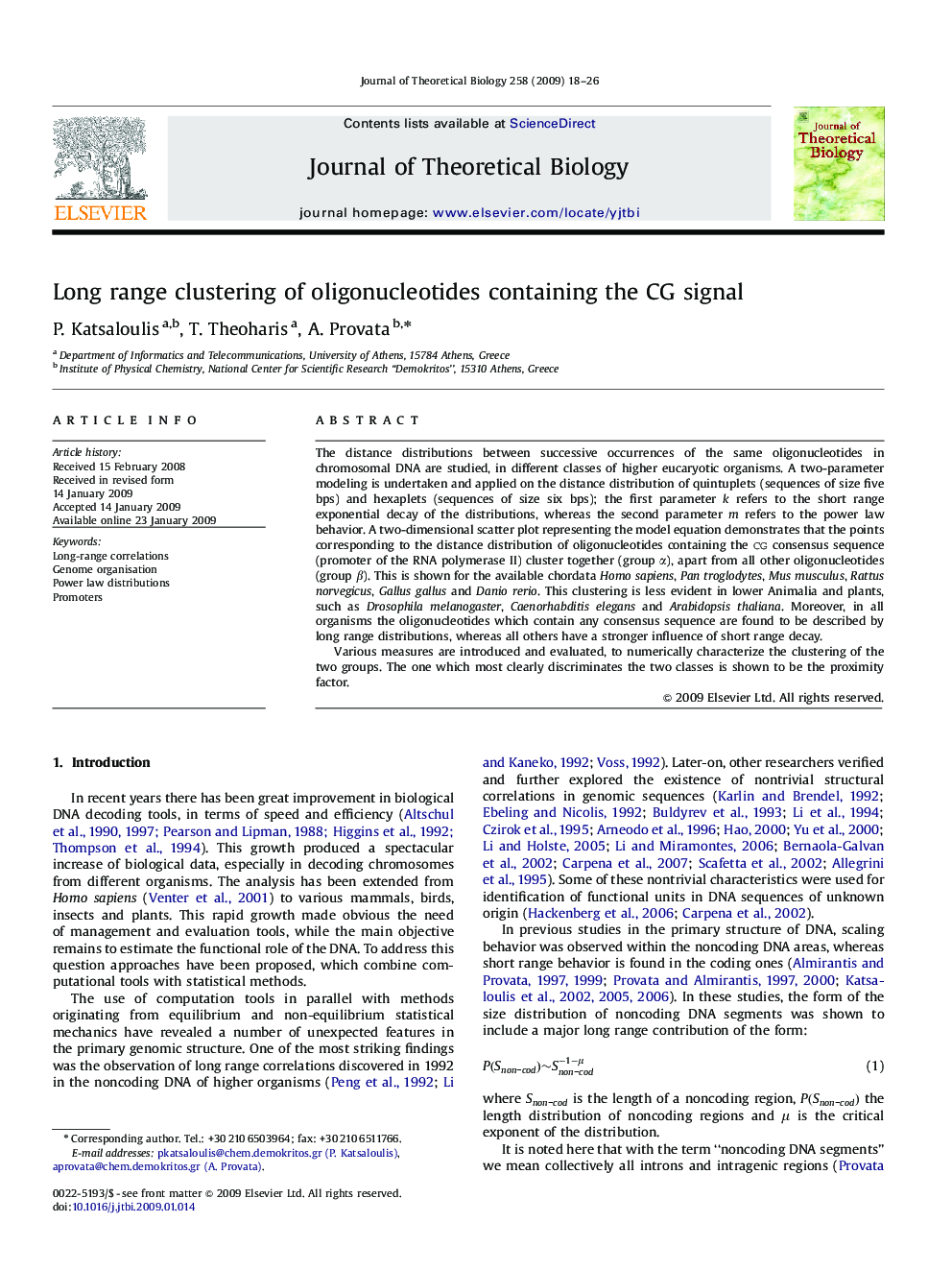| Article ID | Journal | Published Year | Pages | File Type |
|---|---|---|---|---|
| 4498295 | Journal of Theoretical Biology | 2009 | 9 Pages |
The distance distributions between successive occurrences of the same oligonucleotides in chromosomal DNA are studied, in different classes of higher eucaryotic organisms. A two-parameter modeling is undertaken and applied on the distance distribution of quintuplets (sequences of size five bps) and hexaplets (sequences of size six bps); the first parameter kk refers to the short range exponential decay of the distributions, whereas the second parameter mm refers to the power law behavior. A two-dimensional scatter plot representing the model equation demonstrates that the points corresponding to the distance distribution of oligonucleotides containing the CG consensus sequence (promoter of the RNA polymerase II) cluster together (group αα), apart from all other oligonucleotides (group ββ). This is shown for the available chordata Homo sapiens, Pan troglodytes, Mus musculus, Rattus norvegicus, Gallus gallus and Danio rerio. This clustering is less evident in lower Animalia and plants, such as Drosophila melanogaster, Caenorhabditis elegans and Arabidopsis thaliana. Moreover, in all organisms the oligonucleotides which contain any consensus sequence are found to be described by long range distributions, whereas all others have a stronger influence of short range decay.Various measures are introduced and evaluated, to numerically characterize the clustering of the two groups. The one which most clearly discriminates the two classes is shown to be the proximity factor.
